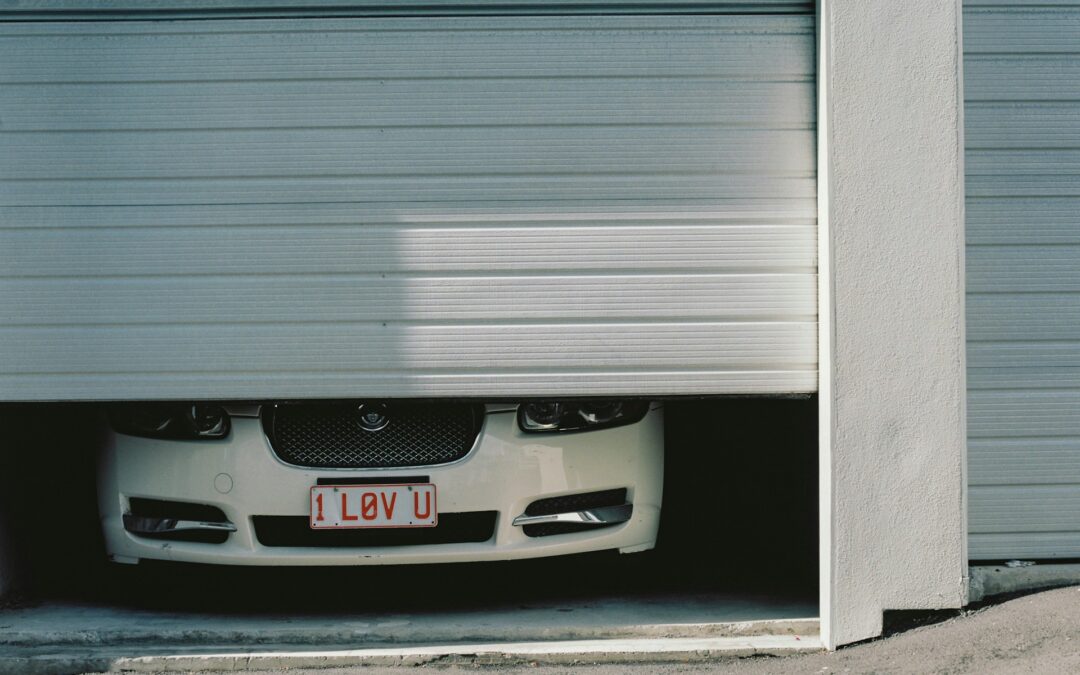When your garage door motor stops working, it throws your whole routine out of sync. Whether you’re late for work or just trying to get groceries in without getting wet, a motor that won’t do its job is a real hassle. The motor is what allows the entire system to open and close smoothly at the press of a button. When something goes off, your door either doesn’t move, moves halfway, or struggles through the process with grinding noises and jerky motions.
A garage door motor that suddenly gives out isn’t always a sign of major failure. It could be something simple like a disconnected plug or a misaligned sensor, but it might also hint at deeper system wear. Figuring out what’s going on is the first step to getting things back in order. The good news is you don’t need to be a technician to spot the early signs and take the right next steps. With a little awareness, you can troubleshoot the possibilities and know when it’s time to hand it over to an expert.
Initial Diagnosis Steps
When your garage door doesn’t respond like it should, start with the basics. A few simple checks can save you time, frustration, and possibly a service call.
Here’s a quick step-by-step checklist to follow before digging into anything more complex:
1. Power Supply
Make sure the motor unit is plugged in. It seems obvious, but it’s surprisingly common for cords to be loose or disconnected after nearby cleaning or movement.
2. Breaker or Fuse Box
Check your home’s electrical panel. If a breaker tripped or a fuse blew, that may be the reason your motor isn’t receiving power.
3. Remote and Wall Switch
Try using both the handheld remote and the wall switch. If the wall switch works but the remote doesn’t, you might just need fresh batteries or a reset on the remote.
4. Obstructions or Door Blockages
Look for anything physically blocking the door from moving. Leaves, tools, or dust buildup near rollers and tracks may stop the door, making it seem like the motor’s the issue when it’s really a blockage.
5. Listen for Sounds
If the motor hums but nothing moves, the issue could be with the internal drive system. If there’s no sound at all, it’s more likely to be an electrical issue.
One example of a simple fix is when a garage door stops halfway down and goes back up. Often, that’s caused by something interrupting the safety sensors near the base of the door. A broom that’s fallen over or even strong sun glare can interfere with the sensor’s function, stopping the door’s movement.
Basic diagnosis like this gives you a clearer idea of whether something minor is causing the problem or if it looks like a bigger mechanical issue.
Common Garage Door Motor Issues
If you’ve worked through the initial checks and the motor still isn’t working, it could mean something inside the motor system has worn down or failed. Some problems are linked to electrical components while others relate to physical wear.
Here are a few common causes behind a motor that stops doing its job:
– Blown Fuse or Tripped Breaker
Even if the plug is in place, internal fuses in the opener unit or home panel might have failed.
– Wiring Problems
Connections can loosen over time from vibrations or exposure to moisture. Wild weather in coastal areas like Vancouver can lead to hidden corrosion or frayed wiring.
– Drive Gears or Belts
The gears that turn the motor shaft can strip over time, especially in older units. Rubber drive belts may wear out or slip.
– Motor Burnout
If the motor overheats or has been pushed beyond its limits, for example by a door that’s too heavy or out of balance, it can burn out.
– Photo-Eye Sensor or Track Misalignment
Motors rely on safety sensors to function properly. If those sensors get bumped or misaligned, the system may cut out. Similarly, if the door tracks aren’t aligned, the motor may stall trying to move the door.
Figuring out which of these issues is behind the problem takes attention to detail. Misalignment or wiring wear won’t always be visible to the untrained eye. But knowing these are common suspects gives you a better understanding of what might be going on under the hood.
Steps for Temporary Fixes
In some cases, you might be able to get your garage door motor working again with a few basic actions. These won’t solve deeper problems, but they can sometimes get things running while you wait for help.
Here are four steps that may offer a temporary solution:
1. Reset the Motor
Most garage door motors have a reset feature. Power off the opener for about 30 seconds, then turn it back on. Some units have a reset button that you hold down until the lights blink. This can clear minor electronic glitches.
2. Check and Tighten Connections
Look at the terminals and wiring in the wall unit and the motor housing. If anything looks loose, it could stop the system from working. Never tamper with wires while the power is on. If you see anything burnt or exposed, it’s time to stop and call in a technician.
3. Clean and Align the Sensors
Photo-eye sensors get dusty or knocked out of place quite easily. Wipe them clean with a soft cloth and check that they face each other directly. If one is slightly off, the motor may power up but then stop halfway.
4. Apply Lubrication
A dry roller or stiff track puts extra load on the motor. Use a garage-door approved lubricant on the rollers, bearings, and tracks. Do not use general-purpose oil or grease as that can gum things up and attract debris.
Keep in mind, these are short-term measures. If the issue keeps coming back or gets worse, it’s a strong sign that the motor or another key component is failing. Temporary fixes aren’t meant to replace professional service, but they can help buy a bit of time before booking the repair.
Why Expert Repair Makes a Difference
Dealing with a garage door motor that’s not working isn’t just about getting the door open or shut again. It’s also about making sure the system is safe and serviced properly. Garage door motors handle a surprising amount of force, and when something fails, it can turn into a hazard.
Hiring a professional gives you more than just peace of mind. A garage door technician will have the tools and training to handle high-voltage wiring, fine-tune limits, and test safety features like battery backups or manual releases. They’ll also catch worn-out parts and loose connections you might not notice.
For example, what seems like a motor issue might actually be a problem with the torsion spring. That is not something to tackle without the right tools or experience. Springs are tightly wound and can cause injury if released unexpectedly, all while putting strain on the motor.
In places like Langley, where temperature shifts and moisture are common, it makes sense to have someone who understands the local climate. These conditions can speed up wear on metal parts and electronics. What quits during a sunny July afternoon may have started wearing down back in the winter.
Keep Things Moving with Seasonal Care
If your garage door motor gives out, it’s never at a good time. Whether it’s the first power check or realigning the sensor, knowing the basics puts you ahead. But once wiring or internal components start to fail, it’s smarter and safer to bring in a professional.
Regular maintenance helps catch problems early and keeps your garage door running smoothly through the year. In Langley, Surrey, and Vancouver, seasonal shifts can wear on all parts of the system, so staying ahead with expert care is worth it. Whether it’s the middle of summer or the wet fall season setting in, no one wants to get stuck outside with groceries and a non-working door.
Being aware early helps cut down on bigger problems later. A reliable motor means a system you can count on, day in and day out.
Dealing with a garage door motor that is not working can quickly throw off your day. For fast, reliable help that keeps your system running smoothly, count on The Door Ace. Our team is here to safely handle repairs and spot the problems you can’t always see. If you’re noticing signs of trouble, learn more about how we can help with a garage door motor that is not working before it becomes a bigger issue.




